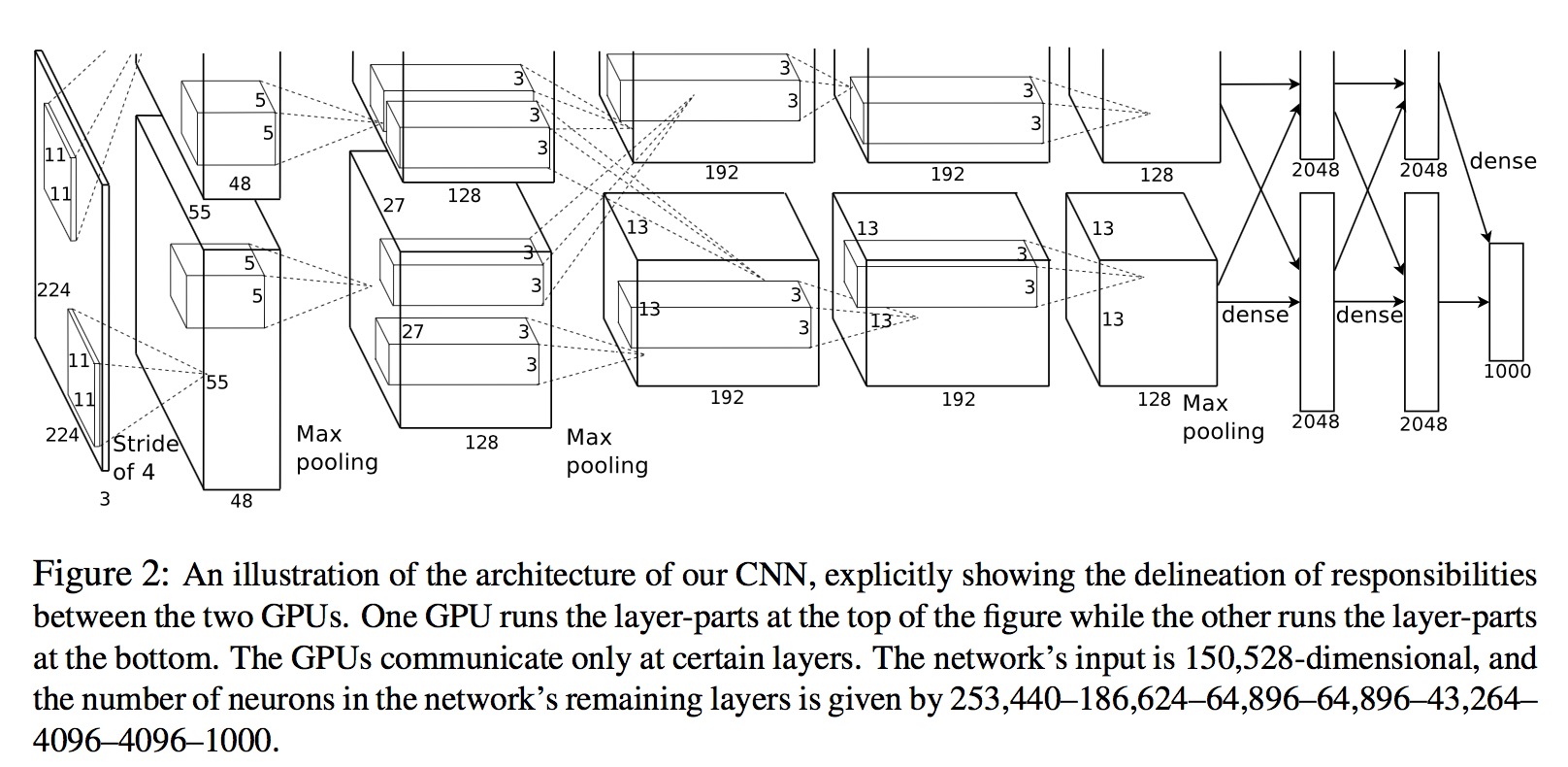学习笔记 深度学习 Pytorch 基础 小嗷犬 2023-01-31 2024-01-25 Pytorch 简介 什么是 Pytorch Python优先的深度学习框架,支持GPU加速和动态神经网络。
为什么使用 PyTorch 动态图机制,更加灵活 与Python紧密结合,更加方便 支持GPU加速,更加快速 支持分布式训练,更加强大 PyTorch 基础 Tensor 张量 Tensor 相当于多维的矩阵。
Tensor 的数据类型有:(32位浮点型)torch.FloatTensor,(64位浮点型)torch.DoubleTensor,(16位整型)torch.ShortTensor,(32位整型)torch.IntTensor,(64位整型)torch.LongTensor。
导入 PyTorch
创建一个没有初始化的 5×3 矩阵
1 2 x = torch.empty(5 , 3 )print (x)
创建一个随机初始化的矩阵
1 2 3 4 5 6 7 5 , 3 )print (x)5 , 3 )print (x)
创建一个全0,全1,或者对角线为1的矩阵,且数据类型为 long
1 2 3 4 5 6 7 8 9 10 11 5 , 3 , dtype=torch.long)print (x)5 , 3 , dtype=torch.long)print (x)5 , 3 , dtype=torch.long)print (x)
从数据中直接创建 Tensor
1 2 3 4 5 6 7 8 5.5 , 3 ])print (x)import numpy as np5 ))print (x)
创建一个和已有 Tensor 一样大小的 Tensor
1 2 x = torch.randn_like(x)print (x)
获取 Tensor 的形状
torch.Size 本质上是一个元组,所以支持元组的各种操作。
转化为 numpy 数组
绝对值
1 2 x = torch.abs (x)print (x)
加法
1 2 3 4 5 6 7 8 9 10 11 12 13 14 15 y = torch.rand(5 , 3 )print (x + y)print (torch.add(x, y))5 , 3 )print (result)print (y)
add_ 是原地操作,即改变了 y 的值。所有的inplace操作都有一个 _ 后缀,表示原地操作。sub 减法,mul 乘法,div 除法,pow 幂运算,mm 矩阵乘法,mv 矩阵向量乘法。
限定范围
1 2 x = torch.clamp(x, min =0 , max =1 )print (x)
改变形状
1 2 3 4 x = torch.randn(4 , 4 )16 )1 , 8 ) print (x.size(), y.size(), z.size())
获取单元素 Tensor 中的值
1 2 x = torch.randn(1 )print (x.item())
使用GPU
1 2 3 4 5 6 7 print (torch.cuda.is_available())5 , 3 )print (x)
Variable 变量 Autograd 自动求导 创建一个张量并设置 requires_grad = True 用来追踪其计算历史
1 2 x = torch.ones(2 , 2 , requires_grad=True )print (x)
对这个张量做一次运算
1 2 3 4 5 6 7 8 9 y = x + 2 print (y)print (y.grad_fn)3 print (z, out)
.requires_grad_() 会改变现有张量的 requires_grad 标志。如果没有指定的话,默认输入的这个标志是 False。
1 2 3 4 5 6 7 8 9 a = torch.randn(2 , 2 )3 ) / (a - 1 ))print (a.requires_grad)True )print (a.requires_grad)sum ()print (b.grad_fn)
梯度 1 2 3 4 5 6 7 8 9 10 x = torch.ones(2 ,2 ,requires_grad=True )2 3 print (x.grad)
即
o u t = 1 4 ∑ i z i out=\frac{1}{4}\sum_iz_i o u t = 4 1 i ∑ z i
z i = 3 ( x i + 2 ) 2 z_i=3(x_i+2)^2 z i = 3 ( x i + 2 ) 2
因为z i ∣ x i = 1 = 27 z_i\bigr\rvert_{x_i=1}=27 z i x i = 1 = 27
∂ o u t ∂ x i = 3 2 ( x i + 2 ) \frac{\partial_{out}}{\partial_{x_i}}=\frac{3}{2}(x_i+2) ∂ x i ∂ o u t = 2 3 ( x i + 2 )
所以
∂ o u t ∂ x i ∣ x i = 1 = 9 2 = 4.5 \frac{\partial_{out}}{\partial_{x_i}}\bigr\rvert_{x_i=1}=\frac{9}{2}=4.5 ∂ x i ∂ o u t x i = 1 = 2 9 = 4.5
雅可比矩阵
数学上,若有向量值函数 y = f(x),那么 y 相对于 x 的梯度是一个雅可比矩阵。
J = [ ∂ y 1 ∂ x 1 ⋯ ∂ y 1 ∂ x n ⋮ ⋱ ⋮ ∂ y m ∂ x 1 ⋯ ∂ y m ∂ x n ] J= \begin{bmatrix} \frac{\partial y_1}{\partial x_1} & \cdots & \frac{\partial y_1}{\partial x_n}\\ \vdots & \ddots & \vdots\\ \frac{\partial y_m}{\partial x_1} & \cdots & \frac{\partial y_m}{\partial x_n} \end{bmatrix} J = ∂ x 1 ∂ y 1 ⋮ ∂ x 1 ∂ y m ⋯ ⋱ ⋯ ∂ x n ∂ y 1 ⋮ ∂ x n ∂ y m
通常来说,torch.autograd 是计算雅可比向量积的一个引擎。也就是说,给定任意向量 v,计算乘积J ⋅ v J·v J ⋅ v v 恰好是标量函数 l = g(y) 的梯度,也即v = ( ∂ l ∂ y 1 , ⋯ , ∂ l ∂ y m ) T v=(\frac{\partial l}{\partial y_1}, \cdots ,\frac{\partial l}{\partial y_m})^T v = ( ∂ y 1 ∂ l , ⋯ , ∂ y m ∂ l ) T l 对 x 的导数:
J ⋅ v = [ ∂ y 1 ∂ x 1 ⋯ ∂ y 1 ∂ x n ⋮ ⋱ ⋮ ∂ y m ∂ x 1 ⋯ ∂ y m ∂ x n ] [ ∂ l ∂ y 1 ⋮ ∂ l ∂ y m ] = [ ∂ l ∂ x 1 ⋮ ∂ l ∂ x n ] J·v= \begin{bmatrix} \frac{\partial y_1}{\partial x_1} & \cdots & \frac{\partial y_1}{\partial x_n}\\ \vdots & \ddots & \vdots\\ \frac{\partial y_m}{\partial x_1} & \cdots & \frac{\partial y_m}{\partial x_n} \end{bmatrix} \begin{bmatrix} \frac{\partial l}{\partial y_1}\\ \vdots\\ \frac{\partial l}{\partial y_m} \end{bmatrix}=\begin{bmatrix} \frac{\partial l}{\partial x_1}\\ \vdots\\ \frac{\partial l}{\partial x_n} \end{bmatrix} J ⋅ v = ∂ x 1 ∂ y 1 ⋮ ∂ x 1 ∂ y m ⋯ ⋱ ⋯ ∂ x n ∂ y 1 ⋮ ∂ x n ∂ y m ∂ y 1 ∂ l ⋮ ∂ y m ∂ l = ∂ x 1 ∂ l ⋮ ∂ x n ∂ l
雅可比向量积的这一特性使得将外部梯度输入到具有非标量输出的模型中变得非常方便。
1 2 3 4 5 x = torch.randn(3 , requires_grad=True )2 while y.data.norm() < 1000 :2 print (y)
下面这种情况,y 不再是标量。torch.autograd 不能直接计算完整的雅可比矩阵,但是如果我们只想要雅可比向量积,只需将这个向量作为参数传给 backward。
1 2 3 v = torch.tensor([0.1 , 1.0 , 0.0001 ], dtype=torch.float )print (x.grad)
也可以通过将代码块包装在 with torch.no_grad(): 中,来阻止 autograd 跟踪设置了 .requires_grad=True 的张量的历史记录。
1 2 3 4 5 print (x.requires_grad)print ((x ** 2 ).requires_grad)with torch.no_grad():print ((x ** 2 ).requires_grad)
Variable Variable 和 Tensor 的区别是 Variable 会被放入计算图中,然后进行前向传播,反向传播,自动求导。
Variable 是在 torch.autograd.Variable 中的,使用Variable 需要导入 torch.autograd.Variable。
1 2 3 4 5 6 7 8 9 10 11 12 13 from torch.autograd import Variable1 ]),requires_grad=True )2 ]),requires_grad=True )3 ]),requires_grad=True )print (x.grad)print (w.grad)print (b.grad)
搭建一个简单的神经网络
1 2 3 4 5 6 7 8 9 10 11 12 13 14 15 16 17 18 19 20 21 22 23 24 25 26 27 28 29 30 31 32 33 import torch100 100 1000 10 20 1e-6 for epoch in range (epoch_n):min =0 ) pow (2 ).sum () print ("Epoch:{}, Loss:{:.4f}" .format (epoch, loss))2 *(y_pred-y) min =0 )
使用 Variable 搭建一个自动计算梯度的神经网络
1 2 3 4 5 6 7 8 9 10 11 12 13 14 15 16 17 18 19 20 21 22 23 24 25 26 27 28 29 30 import torchfrom torch.autograd import Variable100 100 1000 10 False ) False )True ) True )20 1e-6 for epoch in range (epoch_n):min =0 ).mm(w2) pow (2 ).sum () print ("Epoch:{},Loss:{:.4f}" .format (epoch, loss))
使用 nn.Module 自定义传播函数来搭建神经网络
1 2 3 4 5 6 7 8 9 10 11 12 13 14 15 16 17 18 19 20 21 22 23 24 25 26 27 28 29 30 31 32 33 34 35 36 37 38 39 40 41 42 43 44 45 46 import torchfrom torch.autograd import Variable100 100 1000 10 class Model (torch.nn.Module):def __init__ (self ):super (Model, self).__init__()def forward (self, input_n, w1, w2 ):min =0 )return xdef backward (self ):pass False ) False )True ) True )20 1e-6 for epoch in range (epoch_n):pow (2 ).sum ()print ("Epoch:{},Loss:{:.4f}" .format (epoch, loss))
Dataset 数据集 torch.utils.data.Dataset是代表这一数据的抽象类,可以自己定义数据类继承和重写这个抽象类,只需要定义__len__和__getitem__函数即可。
1 2 3 4 5 6 7 8 9 10 11 12 13 14 15 16 17 from torch.utils.data import Datasetclass myDataset (Dataset ):def __init__ (self, csv_file, txt_file, root_dir, other_file ):with open (txt_file, 'r' ) as f:def __len__ (self ):return len (self.csv_data)def __getitem__ (self, idx ):return data
通过上面的方式,可以定义需要的数据类,可以通过迭代的方法取得每一个数据,但是这样很难实现取 batch,shuffle 或者多线程去读取数据,所以 Pytorch 中提供了 torch.utils.data.DataLoader 来定义一个新迭代器。
1 2 from torch.utils.data import DataLoader32 )
nn.Module 模组 所有的层结构和损失函数来自 torch.nn。
1 2 3 4 5 6 7 8 9 10 11 from torch import nnclass net_name (nn.Module):def __init__ (self, other_arguments ):super (net_name, self).__init__()def forward (self, x ):return x
一个神经网络的典型训练过程如下:
定义包含一些可学习参数(或者叫权重)的神经网络 在输入数据集上迭代 通过网络处理输入 计算 loss (输出和正确答案的距离) 将梯度反向传播给网络的参数 更新网络的权重,一般使用一个简单的规则:weight = weight - learning_rate * gradient 使用 torch.nn 内的序列容器 Sequential
1 2 3 4 5 6 7 8 9 10 11 12 13 14 15 16 import torch100 100 1000 10 print (model)
使用 nn.Module 定义一个神经网络
1 2 3 4 5 6 7 8 9 10 11 12 13 14 15 16 17 18 19 20 21 22 23 24 25 26 27 28 29 30 31 32 33 34 35 36 37 38 import torchimport torch.nn as nnimport torch.nn.functional as Fclass Net (nn.Module):def __init__ (self ):super (Net, self).__init__()1 , 6 , 5 )6 , 16 , 5 )16 * 5 * 5 , 120 )120 , 84 )84 , 10 )def forward (self, x ):2 , 2 ))2 )1 , self.num_flat_features(x))return xdef num_flat_features (self, x ):1 :] 1 for s in size:return num_featuresprint (net)
torch.optim 优化 优化算法分为两大类:
(1)一阶优化算法
w = w − η ∂ L ∂ w w = w - \eta \frac{\partial L}{\partial w} w = w − η ∂ w ∂ L
其中,η \eta η ∂ L ∂ w \frac{\partial L}{\partial w} ∂ w ∂ L w w w
(2)二阶优化算法
w = w − η H − 1 ∂ L ∂ w w = w - \eta H^{-1} \frac{\partial L}{\partial w} w = w − η H − 1 ∂ w ∂ L
其中,H H H w w w
1 2 0.01 , momentum=0.9 )
模型的保存和加载 1 2 3 4 5
1 2 3 4 5














